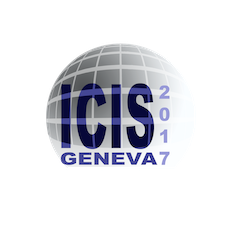Speaker
Description
The Resonance Ionization Laser Ion Source (RILIS) is the most extensively used ion-source at the CERN-ISOLDE on-line radioactive ion beam facility. It provides not only high efficiencies but also offers element and, in some cases even isomer selective ionization. The ionization method itself, based on stepwise resonance excitation and ionization of atoms using tunable lasers, offers the opportunity of performing so-called in-source spectroscopy studies of radioactive isotopes, to reveal nuclear ground-state properties such as charge radii or moments via measurements of isotopic shifts and hyperfine structure of atomic transitions [1].
Doppler broadening of the atomic lines in the high temperature ion source environment limits the achievable resolution of this method. Consequently, its application has been focused on the heavier elements. Furthermore, the feasibility of nuclear isomer selective ionization is restricted to the few cases for which the differences in the hyperfine structure splitting for different nuclear states are resolvable. Nevertheless, the sensitivity of in-source spectroscopy remains unrivaled and therefore a means of eradicating the Doppler-dominated resolution limitation whilst maintaining the sensitivity is a highly desirable goal. By introducing a mirrored surface at the rear of the ion source, and reflecting the incident laser beams back upon themselves, Doppler-free 2-photon excitation and subsequent ionization of the atom becomes feasible. Different methods and materials for achieving this laser beam reflection inside the ISOLDE target/ion source assembly are under investigation. For effective use of the 2-photon excitation, the laser line width has to be reduced as much as possible. For the pulsed RILIS lasers the line width of $<100$ MHz could be reached as defined by the Fourier transformation. A bow-tie, seeded and injection locked titanium:sapphire (Ti:Sa) laser is being developed for covering the red-near IR range, whilst a seeded dye amplification stage will be used for covering the yellow – red spectral range.
Here we summarize these ISOLDE-based developments and also present the results of the first successful demonstration of Doppler-free in-source resonance ionization spectroscopy, conducted at the RISIKO mass separator at Mainz University.
References
[1] B. Marsh et. al., NIM B 317 B, 550-556 (2013)
